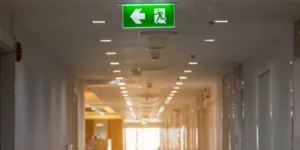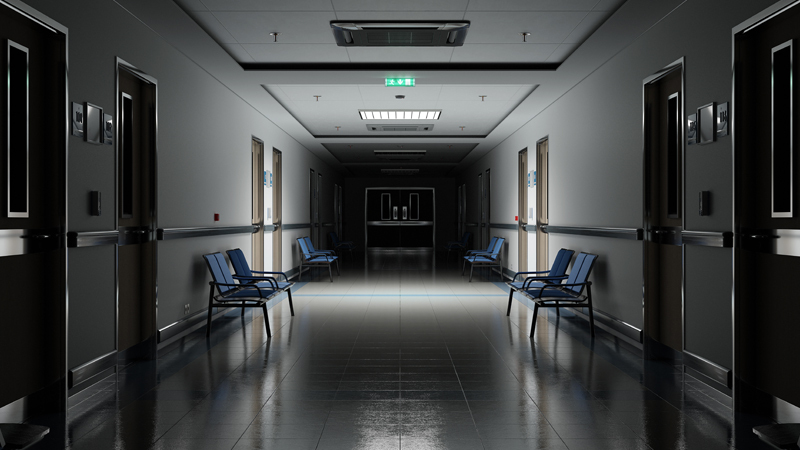29/08/2023
The Complete Guide to BS 5266 Emergency Lighting Requirements
Emergency lighting is a critical aspect of building safety, providing illumination during power outages or emergencies to ensure the safe evacuation of occupants. In the United Kingdom, BS 5266 sets the standard for emergency lighting requirements, providing guidelines and regulations that help architects, engineers, and building owners create safe environments. In this comprehensive guide, we will delve into the significance of BS 5266, its key components, various types of emergency lighting systems, design considerations, testing, maintenance, compliance, and more.
What is the BS 5266 standard?
The BS 5266 standard holds immense significance for businesses as it provides essential guidelines for emergency lighting systems. These systems are crucial for ensuring the safety of occupants during unexpected disruptions in normal lighting, such as power outages or fires. Adhering to BS 5266 helps businesses establish effective emergency lighting strategies that illuminate escape routes and critical areas, reducing the risks associated with panic, accidents, and injuries. By implementing this standard, businesses can create a safer environment for employees, customers, and visitors, demonstrating a commitment to their well-being and complying with essential safety regulations.
Different Types of Emergency Lighting Systems Defined by BS 5266
BS 5266 classifies emergency lighting into various types based on their intended use and operational requirements. Knowing the distinctions between these types is essential for selecting the appropriate system for specific building spaces.
Examples include:
- Escape Route Lighting: Provides illumination along escape routes, such as corridors, stairways, and ramps.
Open Area Lighting: Illuminates large open spaces, like halls and assembly areas, to ensure safe movement toward escape routes. - Standby Lighting: Standby Lighting is intended for areas where it is necessary to maintain essential lighting levels during a power outage to prevent panic or enable safe shutdown procedures. This type of lighting can be used in critical work areas, control rooms, and other spaces where immediate darkness could pose risks.
- High-Risk Task Area Lighting: High-Risk Task Area Lighting is applied in locations where specific risks might occur during an emergency, such as in areas where hazardous processes are carried out or in places with a high likelihood of accidents. The lighting ensures that personnel can safely shut down machinery or processes.
- Escape Sign Lighting: This type of emergency lighting is focused on illuminating exit signs to clearly indicate the direction of escape routes during power failures. It helps occupants easily identify and navigate towards the nearest exits.
- Open Area Anti-Panic Lighting: Open Area Anti-Panic Lighting is installed in large, open spaces to prevent panic and confusion during emergencies. It helps occupants remain calm and find their way to escape routes efficiently.
- Emergency Safety Lighting for Standby Lighting: Emergency Safety Lighting for Standby Lighting is used to illuminate areas with standby lighting systems during a power failure. It ensures that the standby lighting itself remains visible and functional during an emergency.

Key Components of BS 5266: Understanding the Requirements
Understanding each component of emergency lighting is vital for complying with the standard and ensuring effective emergency lighting arrangements.
Placement of Emergency Lights
- Escape Routes: Emergency lighting should be installed along designated escape routes, such as corridors, stairways, and exits. The lights must be positioned to provide sufficient illumination to allow safe movement towards the nearest exit.
- Fire Alarm Call Points: Emergency lighting must illuminate fire alarm call points to ensure they are easily visible and accessible during an emergency.
- Visibility of Exit Signs: Complying with BS 5266 regulations for exit signage ensures that they are strategically placed, appropriately illuminated, and easily recognisable, facilitating quick evacuation.
- Changes in Level or Direction: Any changes in floor levels or changes in the direction of escape routes must be highlighted with emergency lighting to avoid potential hazards.
- Intersection Points: Where escape routes intersect, emergency lighting should be provided to ensure clear visibility of the directions to different exits.
- Minimum Number of Lights: The specific number of emergency lights required depends on factors such as the size, layout, and occupancy of the building. The exact number of lights should be determined through a risk assessment conducted by a competent person.
- Battery Backup Duration: Emergency lighting systems must be capable of providing illumination for a specific duration during a power failure. The minimum backup duration is typically specified to be 1 to 3 hours, depending on the building’s use and occupancy.
- Testing and Maintenance: Regular testing and maintenance are essential to ensure the reliability and functionality of the emergency lighting system. Monthly functional testing and an annual full-duration test should be performed, and any faults should be promptly rectified.
Please note that regulations and standards might be updated over time, so it’s essential to refer to the latest version of BS 5266 and consult with qualified professionals to ensure compliance with current requirements.
Design Considerations: Factors to Account for in Emergency Lighting Planning
Designing an efficient emergency lighting system involves considering factors such as the type of building, occupancy levels, the layout of escape routes, positioning of luminaires, lux levels, and emergency lighting duration. Meeting these design considerations ensures that emergency lighting effectively supports safe evacuation during emergencies.
High-Risk Task Area Lighting: Ensuring Visibility for Critical Activities
Certain areas within a building may involve high-risk tasks that require additional lighting during an emergency. Complying with BS 5266 ensures that these high-risk areas receive appropriate lighting, preventing accidents and facilitating safer rescue operations.
Testing and Maintenance: Compliance with BS 5266 Requirements
Regular testing and maintenance of emergency lighting systems are essential to ensure their reliability and compliance with BS 5266. Emergency lighting systems rely on different power sources, such as batteries, generators, or central power systems. Understanding the available options and their features helps select the most suitable power source for a specific building’s requirements.
Documentation and Record-Keeping
Keeping detailed documentation of the emergency lighting system’s design, installation, testing, and maintenance is crucial for compliance and safety. Adhering to BS 5266 and other relevant regulations is essential for ensuring the safety of building occupants and avoiding potential legal consequences.
By thoroughly understanding and implementing the requirements of BS 5266, building owners, designers, and maintenance personnel can significantly enhance the safety of occupants during emergencies. Properly designed, installed, and maintained emergency lighting systems contribute to a calm and organised evacuation, ultimately saving lives. Embracing the principles outlined in BS 5266 enhances safety and peace of mind for everyone within the building’s premises.
Speak to Sygma today to create an emergency lighting plan for your commercial building that’s in-line with BS 5266 regulations, including surveys, testing, installation and maintenance.
